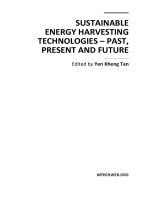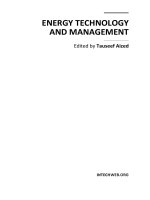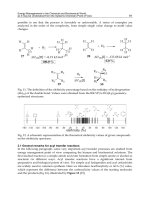Energy Technology and Management Part 1 pot
Bạn đang xem bản rút gọn của tài liệu. Xem và tải ngay bản đầy đủ của tài liệu tại đây (714.32 KB, 20 trang )
ENERGY TECHNOLOGY
AND MANAGEMENT
Edited by Tauseef Aized
Energy Technology and Management
Edited by Tauseef Aized
Published by InTech
Janeza Trdine 9, 51000 Rijeka, Croatia
Copyright © 2011 InTech
All chapters are Open Access articles distributed under the Creative Commons
Non Commercial Share Alike Attribution 3.0 license, which permits to copy,
distribute, transmit, and adapt the work in any medium, so long as the original
work is properly cited. After this work has been published by InTech, authors
have the right to republish it, in whole or part, in any publication of which they
are the author, and to make other personal use of the work. Any republication,
referencing or personal use of the work must explicitly identify the original source.
Statements and opinions expressed in the chapters are these of the individual contributors
and not necessarily those of the editors or publisher. No responsibility is accepted
for the accuracy of information contained in the published articles. The publisher
assumes no responsibility for any damage or injury to persons or property arising out
of the use of any materials, instructions, methods or ideas contained in the book.
Publishing Process Manager Iva Simcic
Technical Editor Teodora Smiljanic
Cover Designer Jan Hyrat
Image Copyright Sideways Design, 2011. Used under license from Shutterstock.com
First published September, 2011
Printed in Croatia
A free online edition of this book is available at www.intechopen.com
Additional hard copies can be obtained from
Energy Technology and Management, Edited by Tauseef Aized
p. cm.
ISBN 978-953-307-742-0
free online editions of InTech
Books and Journals can be found at
www.intechopen.com
Contents
Preface IX
Part 1 Energy Technology 1
Chapter 1 Centralizing the Power Saving Mode for 802.11
Infrastructure Networks 3
Yi Xie, Xiapu Luo and Rocky K. C. Chang
Chapter 2 A Study on Design of Fiber-Reinforced Plastic (FRP) Tubes
as Energy Absorption Element in Vehicles 25
Yuqiu Yang and Hiroyuki Hamada
Chapter 3 Optimal Feeder Reconfiguration with Distributed
Generation in Three-Phase Distribution System by
Fuzzy Multiobjective and Tabu Search 59
Nattachote Rugthaicharoencheep and Somporn Sirisumranukul
Chapter 4 Energy Managements in the Chemical and Biochemical
World, as It may be Understood from the Systems
Chemistry Point of View 79
Zoltán Mucsi, Péter Ábrányi Balogh, Béla Viskolcz
and Imre G. Csizmadia
Chapter 5 Energy Planning for Distributed Generation Energy System:
The Optimization Work 111
Behdad Kiani
Chapter 6 Network Reconfiguration for Distribution System
with Micro-Grid 125
Yu Xiaodan, Chen Huanfei, Liu Zhao and Jia Hongjie
Chapter 7 A Camera-Based Energy Management
of Computer Displays and TV Sets 137
Vasily G. Moshnyaga
VI Contents
Chapter 8 Enhancement of Power System State Estimation 157
Bei Gou and Weibiao Wu
Chapter 9 Smart Home Services for a Smart Grid 171
Young-Myoung Kim and Young-Woo Lee
Part 2 Energy Management 185
Chapter 10 Management Crisis in Partial Deregulation of Energy Sector
and Modeling the Technical and Economic Results of
Organizational Management Structure 187
Joseph Yakubu Oricha
Chapter 11 Methodology Development for a Comprehensive
and Cost-Effective Energy Management in
Public Administrations 201
Capobianchi Simona, Andreassi Luca, Introna Vito,
Martini Fabrizio and Ubertini Stefano
Preface
Energy is one of the most important issue of modern civilization. All material
developments are strongly linked with energy availability and efficient utilization.
Unfortunately, energy resources are not unlimited, especially conventional energy
resources are depleting at an enormous pace. Hence, efficient utilization of available
resources and development of new energy resources are extremely important in order
to maintain material development of human civilization. Energy management, saving
and efficient utilization are important in the backdrop of current energy shortfalls.
Additionally, energy studies have a wider scope than merely concentrating on
technological issues of energy resource development and also include energy policy
and planning issues.
This book is compiled to address both technology and policy issues and presents a
collection of articles from experts belonging to different parts of the world. The articles
range from policy to technological issues of energy development and efficient
utilization. In order to comprehend this book, some background of energy related
issues is required. Students, researchers, academics, policy makers and practitioners
may get benefit from this book.
Prof. Tauseef Aized
University of Engineering and Technology (UET)
Lahore
Pakistan
Part 1
Energy Technology
0
Centralizing the Power Saving Mode for 802.11
Infrastructure Networks
Yi Xie
1
, Xiapu Luo
2
and Rocky K. C. Chang
2
1
Department of Computer Science, Xiamen University
2
Department of Computing, The Hong Kong Polytechnic University
1
China
2
Hong Kong, SAR China
1. Introduction
With the rapid development of wireless networks, efficient energy management for wireless
LAN (WLAN) has become an important problem, because mobile devices’ availability is
determined by their stringent batteries power. Quite a few sources of energy consumption
have been identified (Narseo et al., 2010), among which the wireless communication
component uses up a significant amount of energy. For instance, the Motorola Droid phone
consumes around 200mW with the backlight off, close to 400mW with the backlight on, and
over 800mW when the Wi-Fi radio is active (Zeng et al., 2011). This chapter focuses on
improving the energy efficiency of wireless communication component, because they may
consume up to 50% of the total energy.
Various mechanisms have been proposed to balance between communication quality and
energy consumption for wireless devices, for example, power saving mode (PSM) that puts
an idle client into a low-power mode (Gast, 2005), transmission power control (Nuggehalli
et al., 2002), packet transmission scheduling (Qiao et al., 2003; Tarello et al., 2005), and some
cross-layer methods (Anastasi et al., 2007). They investigate the trade-off between energy
consumption and throughput (Gao et al., 2010; Zhang & Chanson, 2003), delay (Guha et al.,
2010; Nuggehalli et al., 2002; 2006), or network utility (Chiang & Bell, 2004). In this chapter,
we propose a centralized PSM (C-PSM), an AP-centric deployment of the IEEE 802.11 PSM, to
optimize power saving and multiple performance metrics for infrastructure networks which
are widely deployed in enterprise, campus, and metropolitan networks. In these networks,
wireless clients (e.g., laptops, PDAs and mobile phones) using the IEEE 802.11 infrastructure
mode connect to the Internet through an access point (AP). The experiment results show that
significant improvements can be obtained from the new deployment of C-PSM.
The IEEE 802.11 PSM, widely used in WLAN, allows an idle client to go into a sleep mode.
Hereafter, we use PSM to refer to the IEEE 802.11 PSM. The clients save energy by sleeping
while wakes up periodically to receive beacon frames from AP. The beacon frame, sent by an
access point (AP) every beacon interval (BI), indicates whether clients have frames buffered at
the AP. Each client’s wake-up frequency is determined by a PSM parameter listen interval (LI).
Both BI and LI are configurable, and their settings directly influence the PSM’s performance
shown by the analysis of section 4. Unfortunately, the protocol does not prescribe how the BI
1
2 Will-be-set-by-IN-TECH
and LI should be configured in PSM; therefore, default values are often used. Obviously, the
PSM using default settings cannot adapt to the traffic and configuration dynamics inherent
in typical wireless networks. Worse yet, the PSM was reported to have adverse impact on
application performance, such as short TCP connections (Krashinsky & Balakrishnan, 2005).
To address these shortcomings, a number of new power-saving schemes that put idle clients
into sleep have been proposed. A class of them (e.g., (Nath et al., 2004); (Qiao & Shin, 2005);
(Krashinsky & Balakrishnan, 2005)) enables each client to save energy by reducing the number
of unnecessary wake-ups ( i.e., design an optimal wake-up schedule). These user-centric
schemes, however, do not address energy consumption due to channel contention which, as
we will show in section 3, is another major source of energy wastage. Another class adopts an
AP-centric approach which exploits AP to improve the energy efficiency of all clients in the
network. Within this class, some schemes design a packet transmission schedule to minimize
channel contention (e.g., (Lin et al., 2006); (He et al., 2007); (Zeng et al., 2011)). Others redesign
beacon frame and poll clients one by one, which totally avoids channel contention (Lee et al.,
2006). However, most AP-centric schemes are not compatible with the standard PSM scheme
or difficult to implement, because they employ precise transmission schedule.
Unlike the previous works on the power saving mode (PSM), our C-PSM optimizes the beacon
interval, listen interval, minimal congestion window, and sequence of first wake-up time for
each device according to the traffic characteristics. Firstly, the AP chooses the optimal BI
and LIs for clients based on the pattern of arriving packets to reduce energy consumption
due to both unnecessary wake-ups and channel contentions. Especially, the energy wasted
in channel contentions could be very significant, because all clients involved cannot go to
sleep throughout the contention period which could be very long. Secondly, the AP assigns
congestion windows to the clients which are involved in collisions, such that a client that
wakes up less frequently will be able to retransmit earlier. Finally, C-PSM provides an
additional wakeup schedule to further reduce simultaneous wakeups of clients.
Having the AP control the PSM parameters, C-PSM is therefore able to maximize the total
energy efficiency for all clients and facilitates various aspects of network management and
operations. Our extensive simulation results show that the C-PSM is very promising under
four traditional distributions of inter-frame arrival times: deterministic, uniform, exponential,
and Pareto. For example, under exponential traffic, the C-PSM can reduce power consumption
by at least 50% compared with the standard PSM (S-PSM). At the same time, C-PSM also
decreases the frame buffering delay at the AP by 30%. The wake-up schedule can further
save the energy consumption by another 22%. Moreover, the C-PSM’s advantage of energy
saving is robust in a wide range of operational scenarios. For example, the C-PSM’s energy
saving remains effective for a large number of clients, heavier network workloads, and other
configuration settings. In contrast, a client randomly selecting PSM parameters cannot obtain
any long-term benefit in terms of performance or energy consumption.
Our C-PSM is different from other AP-centric schemes in three important aspects. First,
C-PSM conforms to PSM, whereas other AP-centric schemes, such as (Belghith et al., 2007),
do not. The only additional mechanism required for C-PSM is to notify the clients of their
optimal LIs which could be accomplished through the beacon transmission channel. Second,
C-PSM does not rely on computational-expensive packet scheduling which is employed in
(He et al., 2007); (Lin et al., 2006); (Lee et al., 2006). Instead, the AP in C-PSM simply observes
the statistics of the packet arrival patterns. Third, C-PSM is designed independent of the
upper-layer protocols. Therefore, it could be used for any mix of network protocols. However,
some AP-centric schemes, such as (Anastasi et al., 2004), are designed only for TCP traffic.
4
Energy Technology and Management
Centralizing the Power Saving Mode for 802.11 Infrastructure Networks 3
The rest of this chapter is organized as following. In section 2, we summarize previous
energy-saving schemes for IEEE802.11 infrastructure networks. The system models and a
PSM simulator are described in section 3. We motivate C-PSM by discussing the impacts of
BI and LIs on energy efficiency and other performance metrics in section 4. Next, section 5
presents the design of C-PSM, and section 6 evaluates the performance of C-PSM based
on extensive simulation experiments. The results lend a strong support to the efficiency of
C-PSM. For example, compared with PSM, C-PSM reduces significantly more energy (up to
76%), achieves higher energy efficiency (up to 320%), and reducing AP buffering delay (up to
88%). The results also show that the improvements of C-PSM over S-PSM mainly depend on
the wake-up energy consumption and the ratio of idle power to sleep power. Finally, section 7
concludes this chapter with future work.
2. Related work
Several enhancements adopt a user-centric approach to let each client determine when it will
sleep and wake up. For example, Nath et al. (Nath et al., 2004) proposed a dynamic wake-up
period in which each client chooses its LI according to the round-trip time of its current TCP
connection. The Bounded Slowdown Protocol (Krashinsky & Balakrishnan, 2005), another
user-centric method, allows a client to increase its LI when the period of idleness increases.
In Smart PSM (Qiao & Shin, 2005), each client determines whether it will enter into the
PSM depending on the traffic condition. After the client enters into the PSM, the LI can be
dynamically adjusted. Although the user-centric methods are quite effective in reducing
a client’s energy, they do not address the power consumption due to channel contention.
Moreover, it is not clear whether these schemes remain effective when some other clients do
not employ them.
An AP-centric approach, on the other hand, lets the AP deploy the PSM operations. The
power-saving management proposed in (Anastasi et al., 2004) saves a client’s energy by
extending its sleep period and reducing unnecessary wakeups when the AP and the single
client communicate using Indirect-TCP. Most AP-centric schemes support multiple clients,
and try to totally eliminate channel contention. For example, the wake-up schedule proposed
in (Lin et al., 2006) redesigns the TIM to let only one client to retrieve its buffered frame.
The AP in the scheduled PSM (He et al., 2007) assigns slices of a BI for the clients’
buffered frames. The scheme proposed in (Lee et al., 2006) computes an optimal BI and
design an energy-efficient scheduler for frame transmissions within one BI. Network-Assisted
Power Management (NAPman) (Rozner & Navda, 2010) for WiFi devices leverages AP
virtualization and uses a new energy-aware fair scheduling algorithm to minimize client
energy consumption and unnecessary retransmissions. It is also helpful of ensuring
fairness among competing traffic. Although these schemes generally perform well, their
computation-intensive scheduling algorithms introduce high cost. In contrast, our C-PSM
computes optimal BI and LIs jointly to reduce unnecessary wake-ups and channel contention,
and optionally uses a wake-up schedule to further decrease the energy consumption.
Other powers-saving schemes based on sleeping even abandon the frame retrieving process of
PSM. In the Once Poll PSM (Belghith et al., 2007), the frames buffered at the AP are forwarded
upon the reception of a single PS-Poll. In the PSM-throttling (Tan et al., 2007), which does not
use beacon frames, a wireless client wakes up at the beginning of each traffic burst, because
it can identify bandwidth throttling connections and reshape the TCP traffic into periodic
bursts. A power-saving multi-channel MAC protocol (PSM-MMAC) (Wang et al., 2006) was
5
Centralizing the Power Saving Mode for 802.11 Infrastructure Networks
4 Will-be-set-by-IN-TECH
designed to reduce the collision probability and the waiting time in the ’awake’ state of a node.
The medium access probability is optimized by estimating the number of active links, queue
lengths and channel conditions, such that PSM-MMAC results in improved throughput, delay
performance, and energy efficiency.
3. Models and notations
3.1 The IEEE802.11 PSM
The PSM allows a wireless client to sleep instead of staying in active state all the time and
asks the AP to buffer the frames for them. Let the AP’s BI be β millisecond (ms). The AP
broadcasts a beacon frame every β ms to announce the buffer status of all PSM-enabled clients
in the Traffic Indication Map (TIM) that uses one bit to indicate empty or nonempty buffer for
each client. On the other hand, each PSM-enabled client’s LI is a multiple of BI; therefore, the
BI actually determines the LI’s granularity. Let the value of LI be γ
× β ms, where γ ≥ 1. For
the PSM, the default settings are β
= 100 ms and γ = 1.
Figure 1 (Gast, 2005) illustrates the PSM operation for two wireless clients s
1
and s
2
. s
1
has a LI
of 2 while s
2
has a LI of 3. The first (second) bit in the TIM indicates the buffer status for client
s
1
(s
2
). The shaded region shows that the client is in the active state. After waking up for the
first time, s
1
is notified of its frames being buffered at the AP through the TIM. The client then
sends a PS-Poll frame to retrieve the first frame. If the More Data bit in the received frame is
not set, it will return to sleep; otherwise, it will send another PS-Poll frame. The same data
exchange repeats until all buffered frames are sent and then the client goes to sleep. However,
if a client wants to send data, it may wake up any time to transmit them. We will come back
to this figure in section 4 to analyze the energy consumption sources.
Fig. 1. An example of the PSM operation for two wireless clients.
3.2 System model
Our model consists of an AP and c PSM-enabled wireless clients s
j
, j = 1, ,c, which run
on IEEE 802.11b with a transmission rate of 11Mps. We have chosen IEEE 802.11b over
6
Energy Technology and Management
Centralizing the Power Saving Mode for 802.11 Infrastructure Networks 5
IEEE 802.11a/g for its less complex protocols. Moreover, IEEE 802.11a/g’s rate adaptation
algorithms will make the analysis much more difficult. The model considers only downlink
traffic (i.e., those from the AP to clients). We do not consider the uplink traffic, because
the PSM is effective only for downlink-dominant communication patterns. Furthermore, we
model the traffic arriving at the AP from different sources, which are affected by applications,
upper-layer protocols, and network path properties.
There are two random variables in our models: inter-frame arrival time and frame size. Let
T
j
be the inter-frame arrival time for s
j
’s traffic source and the mean of T
j
be δ
j
. Let the vector
of the client’s mean inter-frame arrival times be Δ
=[δ
1
, ,δ
c
]. Our current study allows T
j
to take on four types of distributions: deterministic (DET), uniform (UNI), exponential (EXP),
and Pareto (PAR). On the other hand, the frame size distribution is either deterministic and
uniform. Besides β, the AP in C-PSM can also configure the LIs for all clients (Γ
=[γ
1
, ,γ
c
])
and the minimal congestion windows for all clients (Θ
=[θ
1
, ,θ
c
]).
3.3 A simulator
We have adopted simulation as the major tool to study the problem, because simulation
can capture many fine details than analytical models. Unfortunately, many publicly
available simulators, such as J-SIM (Tyan, 2002), have not implemented most operations
for infrastructure networks and the PSM, such as the beacon frames and PS-Poll frames.
Even for the de facto simulator ns-2 (Berkeley et al., 1996), it is surprising that its PSM
module (Krashinsky & Balakrishnan, 2005) supports only a single client. This prompted
us to write our own simulator using MATLAB which provides an easy-to-use language and
other supporting facilities to model the MAC sublayer accurately and effectively. There are
also other MATLAB-based IEEE802.11 simulators, such as for IEEE802.11a (MATLAB Central,
2003) and the PHY layer of IEEE802.11b (MATLAB Central, 2009).
Our simulator implements the details of the IEEE 802.11b DCF with PSM, including the
PS-Poll, beacon frames (with TIM), backoff algorithm, and congestion window. But we
have excluded other nonessential elements (e.g., authentication and (de)association) and the
RTS/CTS mechanism which is often turned off to increase the performance. We have used the
simulation parameters in Table 1 for the experiments conducted in this chapter
1
. The values
of power and energy consumption, which belong to the power consumption model
A (shown
in Table 10), have been widely used (Feeney & Nilsson, 2001; Margi, 2006)
2
. We will explain
why the simulator selects these values in subsection 6.4.
The simulator produces detailed trace files which record frame exchanges, channel collisions,
and clients’ mode transitions. By carefully analyzing the trace files, we have validated the
correctness of the PSM simulation. Moreover, we have obtained the following performance
metrics from the trace files:
1. P: the total power consumed by the clients by watt (W).
2. T: the total client throughput by bits per second (bps).
3. R
T/P
:
T
P
, the total energy efficiency metric by bits per joule (bpJ).
1
The simulator uses only the long preamble, 192μs. The transmission time of each frame is therefore
equal to 192
+
size∗8
transmission r ate
μs.
2
The data for LUCENT IEEE 802.11 WAVELAN PC card were provided by the manufacturer and
evaluated in (Feeney & Nilsson, 2001).
7
Centralizing the Power Saving Mode for 802.11 Infrastructure Networks
6 Will-be-set-by-IN-TECH
Simulation parameters Values
Number of clients 1to20
Data transmission rate (DTR) 11 Mbps
Basic transmission rate (BTR) 2 Mbps
Data frame size (DFS) 512 bytes
Beacon frame size (BFS) 28 bytes
PS-Poll frame size (PFS) 14 bytes
ACK frame size (AFS) 14 bytes
Transmission power 1.4 W
Reception power 0.9 W
Idle power 0.7 W
Sleeping power 0.060 W
Wake-up energy 0.003 J
slotTime 20μs
SIFS 10μs
DIFS 50μs
Table 1. Simulation parameters used in this chapter.
4. R
c/t
:
N
c
N
t
, where N
t
is the total number of transmission attempts by AP and all clients, and
N
c
is the total number of collided frames by AP and all clients.
5. R
u/w
:
N
u
N
w
, where N
w
is the total number of wake-ups by all clients, and N
u
is the total
number of unnecessary wake-ups by all clients.
6. R
bB/B,k
:
N
bB,k
N
B
, where N
B
is the total number of BIs, and N
bB,k
is the total number of BIs in
which k clients are involved in channel contention, k
≥ 2.
7. d
j
: the frame buffering delay of s
j
’s frames at the AP by ms.
We have simulated for c
= 2, . . . , 20 in an increment of two. Each experiment was run for
at least 20 seconds in simulation time after observing the time of convergence from several
preliminary experiments. we have repeated for each simulation setting for 20 times and report
their average values. All the results reported in the paper fall within a 95% confidence level.
4. A preliminary analysis
To motivate the design of C-PSM, we first analyze the impact of the BI and that of the LIs
on the energy consumption of two wireless clients. There are two main sources of energy
wastage: unnecessary wake-ups and channel contention. Clearly, the individual LI has a
direct impact on the number of unnecessary wake-ups; an overly-frequent wake-ups will
consume a significant amount of energy. For example, as shown in Figure 1, s
2
wakes up
at the first epoch but finds no frames buffered for it.
Energy wastage due to channel contention, on the other hand, is more complicated. Back to
Figure 1 again, s
2
wakes up the second time to find the frames buffered at the AP. However,
it loses to s
1
after contending for the channel during the PS-Poll transmissions. Client s
2
then
stays in the active mode during the backoff process which could take a long time. Therefore,
rescheduling the active clients’ wake-ups to nonoverlapping epoches will reduce such energy
wastage. Note that reducing the BI value will also help, because, as mentioned before, the
BI value determines the LI’s granularity. Besides, the clients’ congestion windows will also
contribute to this energy consumption source.
8
Energy Technology and Management
Centralizing the Power Saving Mode for 802.11 Infrastructure Networks 7
4.1 Evaluating the impact of beacon and listen intervals
Since Nedevschi et al. (2008) has shown that the sleeping mechanism is valuable when the
network utilization (ρ) is less than 30% , we select Δ to let the network be lightly loaded. More
precisely, we consider only the Δs that satisfy
ρ = b
min
c
∑
j=1
1/δ
j
< 30%, where (1)
b
min
=
DFS
DTR
+
PFS + AFS
BTR
+ DIFS + 2SIFS. (2)
where b
min
is the minimum transmission time for one data frame (i.e., without using PSM or
suffering from channel contention). According to the DCF and Table 1, b
min
is around 1.13ms
when c
= 2 and Δ =[15; 25]ms (i.e., ρ ≈ 12% < 30%).
Impact of BI We investigate the impact of β when it changes from 10ms to 200ms with the
default PSM settings: Γ
=[1; 1] and Θ =[31; 31]. As shown in Figure 2(a), P is high when
β is too small, because much energy is wasted on clients’ frequent wake-ups. When β is too
large, many frames are accumulated at the AP. Consequently, energy is wasted on channel
contention. The optimal β in this example is 50ms, instead of the default value of 100ms.
Moreover, since R
T/P
is inversely proportional to P, Figure 2(b) shows a similar trend as
Figure 2(a).
(a) P verses β, γ
1
= γ
2
= 1. (b) R
T/P
verses β, γ
1
= γ
2
= 1.
Fig. 2. Impact of BI for c = 2 and Δ =[15; 25]ms.
Impact of LIs Γ can also influence the clients’ energy consumption and communication
performance. Lei & Nilsson (2007) obtained optimal LIs to maximize energy efficiency based
on M/G/1 and D/G/1 queuing models. However, the assumptions used in these models
generally do not hold for the PSM. In our simulation study, we fix β to 50ms and consider
different Γs for two clients. Table 2 for the EXP distribution clearly shows that the default
case of
[1; 1] is not optimal for the six performance metrics. The best value for each metric is
underlined. Overall, the case of
[1; 2] achieves the best performance. It is worth noting that
γ
1
γ
2
is closest to
δ
1
δ
2
for Γ =[1; 2]. We have observed similar results for the other three inter-frame
arrival time distributions.
9
Centralizing the Power Saving Mode for 802.11 Infrastructure Networks
8 Will-be-set-by-IN-TECH
Γ R
c/t
R
u/w
R
bB/B,2
P(W) R
T/P
(10
5
bpJ) d
1
(ms) d
2
(ms)
[1; 1] 1.54% 11.51% 81.37% 0.6109 7.1578 37.4 32.3
[1; 2] 1.04% 4.97% 42.32% 0.5487 7.9674 29.8 60.0
[2; 1] 1.07% 12.24% 46.79% 0.6032 7.2316 81.0 28.0
[2; 2] 1.25% 1.67% 49.16% 0.7470 5.8260 125.4 61.3
Table 2. Simulation results for different Γs under EXP inter-frame arrival distribution for
c
= 2, β = 50ms, and Δ =[15; 25]ms.
5. Centralized PSM
5.1 The main algorithm
This section presents the centralized PSM (C-PSM) scheme that allows the AP to determine
and deploy optimal PSM settings for itself and all clients. The AP first decides optimal β
(denoted by β
∗
) and optimal Γ (denoted by Γ
∗
) based on the client’s frame arrival patterns.
These optimal settings are expected to bring significant improvement to the energy efficiency,
because the intervals are selected to reduce the number of unnecessary wake-ups and channel
contention. The AP also obtains a Θ (denoted by Θ
∗
) to ensure that any client will not be
denied channel access for too long.
The inputs to the main algorithm include Δ, β
min
,
β
, and
Θ
. β
min
is a lower bound of β
∗
, and
β
and
Θ
are the step sizes for searching β
∗
and Θ
∗
, respectively. The algorithm executes the
following steps to yield β
∗
, Γ
∗
, and Θ
∗
.
Step 1 (Determining the candidates of β
∗
and Γ
∗
) The purpose of this step is to obtain a
number of β
∗
and Γ
∗
candidates for the second step.
We first consider a Γ
∗
candidate: [L
1
; ;L
c
]. Let L
j
= α
j
× δ
j
, where α
j
≥ 1, is an integer
scaling factor. To reduce unnecessary wake-up, the probability that an awaken client finds an
empty buffer at the AP (denoted by Pr
0
) should be less than a given threshold 0 < ξ ≤ 1. The
choice of this threshold reflects the tradeoff between the number of unnecessary wake-ups and
the period of channel contention. If ξ is too large, the LI may be short and a lot of unnecessary
wake-ups will occur. If ξ is too small, the frames buffered during the long LI may cause
channel contention. After running a number of empirical simulations, we let ξ
= 0.05. Then,
α
j
is the smallest integer which satisfies Pr
0
≤ 0.05. Table 3 shows examples of determining α
j
under the four inter-frame arrival time distributions. For example, for the EXP distribution,
L
j
is three times of δ
j
.
To determine the β
∗
candidates, following the guideline in (Nath et al., 2004), we set β
min
to 10ms. To determine the upper bound of β, we note that BI should not be larger than
any client’s LI. Therefore, the upper bound of β is given by min
∀j
L
j
. We then select n + 1
BI candidates uniformly within the range of
[β
min
, min
∀j
L
j
], where n = (min
∀j
L
j
− β
min
)/
β
.
Moreover, for each β
∗
candidate β
i
, we consider three Γ
∗
candidates:
1. Γ
i,1
=[L
1
/β
i
; ··· ; L
c
/β
i
],
2. Γ
i,2
=[L
1
/β
i
; ··· ; L
c
/β
i
], where x gives the round-off value of a real number x, and
3. Γ
i,3
=[L
1
/β
i
; ··· ; L
c
/β
i
].
Step 2 (Determining β
∗
and Γ
∗
) The purpose of this step is to obtain the best β
∗
and Γ
∗
from
a set of candidates identified in Step 1. The criterion is based on minimizing the number of
simultaneous wake-ups. There are two sub-steps to achieving the goal.
In the first sub-step, we search for the best Γ for each β
∗
candidate obtained in Step 1. That is,
for a given β
i
obtained in Step 1, we select the best Γ from Γ
i,1
, Γ
i,2
, and Γ
i,3
that minimizes the
10
Energy Technology and Management
